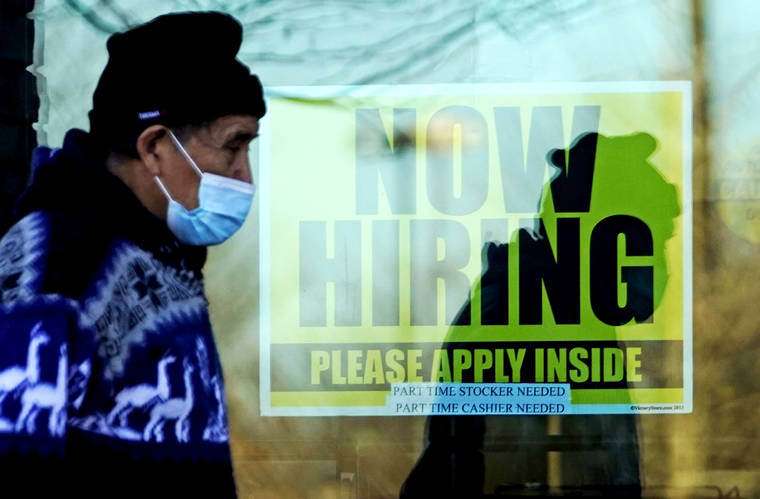WASHINGTON — Unemployed Americans who have turned down job offers because they feared their prospective employers weren’t providing sufficient protection from the coronavirus would qualify for jobless aid under a directive the Labor Department issued Thursday.
The measure would also expand a federal unemployment-benefits program, established in last spring’s economic relief package, to cover workers who have lost hours or who were laid off because of the pandemic. It would also cover school employees who lose jobs or work hours because of school closings.
The federal program, known as Pandemic Unemployment Assistance, made the self-employed and gig workers eligible for jobless aid for the first time.
“Until now, unemployment insurance benefits during the pandemic have been too scattered and too uncertain,” said Patricia Smith, senior adviser to the labor secretary. “That begins to change today, with many more workers now eligible for unemployment insurance benefits.”
The directive stems from an executive order President Joe Biden issued last month. The White House said it sought to “ensure that unemployed Americans no longer have to choose between paying their bills and keeping themselves and their families safe from COVID-19 by clarifying that workers who refuse unsafe working conditions can still receive unemployment insurance.”
Speaking to reporters, department officials declined to estimate how many Americans would now become newly eligible for jobless benefits.
The benefits will be made retroactive, officials said. People who applied for unemployment aid after Dec. 27 can receive retroactive payments back to Dec. 6. Those who applied before then and were turned down can receive retroactive payments dating back to when they first applied.
With unemployed Americans now receiving a $300 weekly federal payment on top of state benefits that average about $320 a week, the retroactive aid could result in significant lump sum payments. The department estimates that states won’t be able to update their jobless-benefit systems to include the new criteria until late March, which could mean that the first payments would amount to about four months of benefits.
Workers whose place of employment have closed because of the pandemic are already eligible to receive jobless aid from the federal program. But workers who were laid off even as their company remained open, such as waiters at a restaurant that stayed open for delivery, weren’t eligible. This directive will now cover those workers, the Labor Department said.
For the unemployed who have turned down jobs out of concern over the coronavirus, applicants will have to state under penalty of perjury that their prospective employer wasn’t meeting state or local guidelines on mask-wearing or personal protective equipment, said Suzi Levine, a deputy assistant labor secretary.
The potential for large lump sum payments could encourage fraud, which has bedeviled unemployment assistance programs all year. Levine said the Labor Department would continue to combat fraudulent claims.
“It is imperative to not let such callous theft deter us from bolstering our support for America’s workers and families who are suffering through the double impact of the ongoing coronavirus pandemic and associated job losses,” she added.
On Wednesday, the Labor Department’s Office of the Inspector General released a report that said it had found $5.4 billion in fraudulent payments between March and October of 2020.
While that is a small fraction of the $400 billion in jobless aid that was paid last year, “the OIG expects that the actual amount of potential fraud is much larger,” the report said. It noted that California has estimated that at least 10% of its payments, or $11 billion, and as much as 27%, or $29 billion, were fraudulent.


